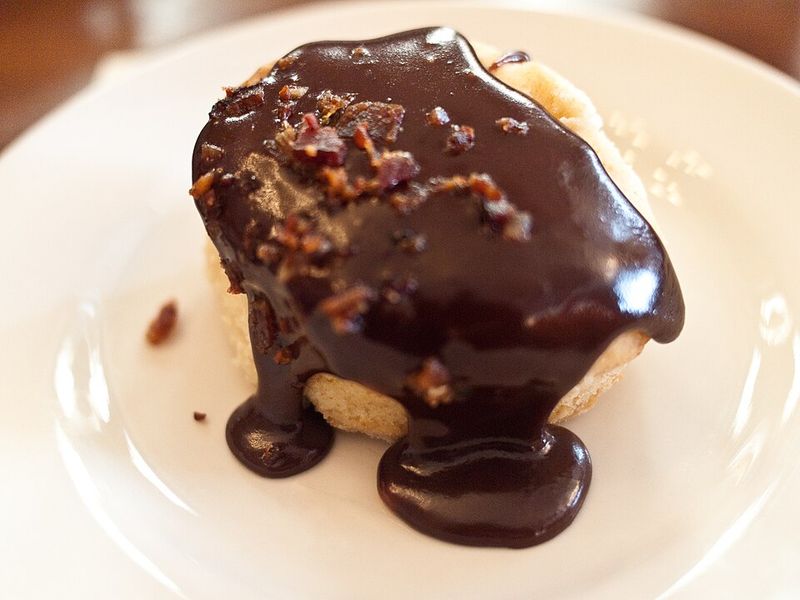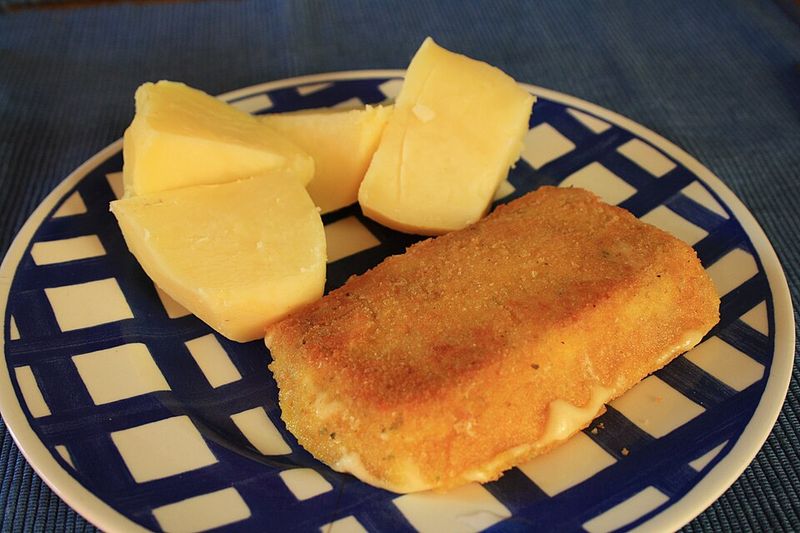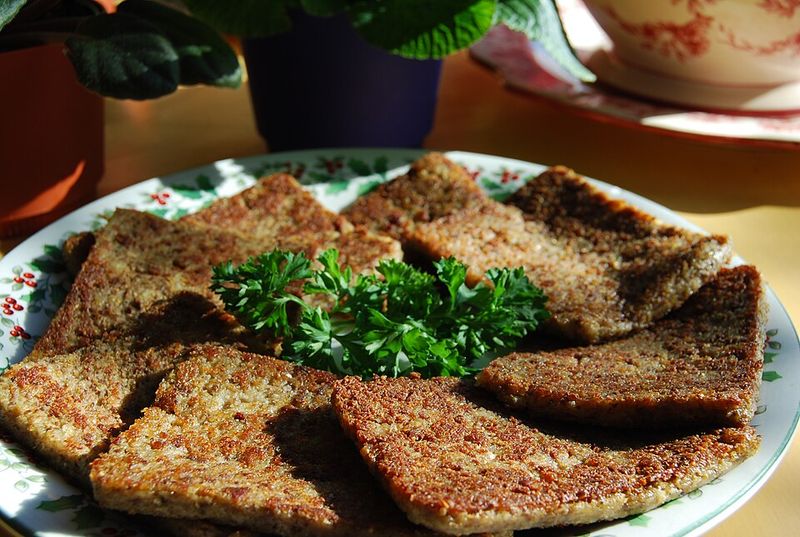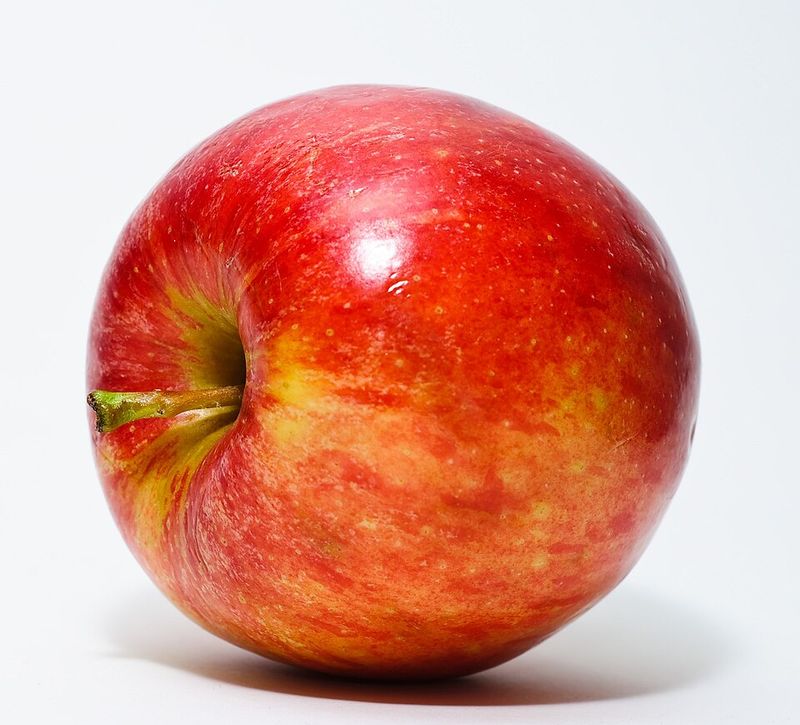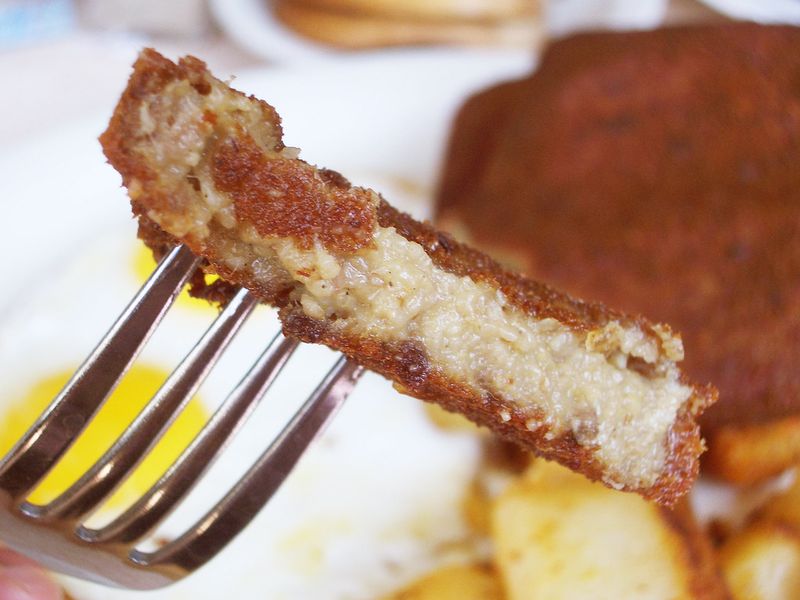Remember when breakfast tables looked completely different? Before smoothie bowls and avocado toast took over, families gathered around hearty, homemade dishes that seem almost forgotten today. Many of these classic morning meals have vanished from modern kitchens, but those who grew up with them still recall the comforting flavors and aromas. Take a nostalgic journey through breakfast history with these delicious throwbacks that defined mornings decades ago.
1. Chocolate Gravy and Biscuits
Southern grandmothers knew the secret to making weekend mornings magical with this sweet treat. Cocoa powder, sugar, butter, and milk came together in a skillet to create a velvety sauce that turned ordinary biscuits into dessert for breakfast.
Kids would rush to the table when the smell of fresh-baked biscuits mixed with melting chocolate filled the house. This wasn’t your typical breakfast choice, but special occasions called for something extraordinary. The gravy had a pudding-like consistency that soaked into every flaky layer.
Today’s health-conscious world has mostly abandoned this sugary start to the day. However, small pockets of the South still keep the tradition alive at family gatherings and church breakfasts.
2. Red-Eye Gravy with Ham Biscuits
Coffee lovers found an ingenious way to double down on their morning caffeine kick. After frying salty country ham, cooks would pour strong black coffee into the hot pan, creating a thin, intensely flavored gravy with a distinctive reddish tint.
The combination might sound strange to modern ears, but it packed a powerful punch of energy and flavor. Salt from the ham balanced the bitter coffee notes perfectly. Workers heading out for long days in the fields needed this kind of fuel to keep going.
The name supposedly comes from the gravy’s appearance, which resembled a bloodshot eye. These days, you’d be hard-pressed to find this on any restaurant menu outside authentic Southern diners.
3. Tomato Gravy on Biscuits
When pantry supplies ran low, resourceful cooks turned to their gardens for breakfast inspiration. Tomatoes, whether fresh or canned, became the base for a tangy gravy that stretched meals and satisfied hungry families without breaking the bank.
Flour, bacon grease, and tomatoes simmered together created a savory sauce that clung beautifully to warm biscuits. Some versions included a pinch of sugar to balance the acidity. The result was comfort food at its finest, simple yet deeply satisfying.
This dish represents Depression-era ingenuity when nothing went to waste. Modern foodies occasionally rediscover it, but most younger generations have never experienced this tomato-based morning classic that once appeared on breakfast tables across rural America.
4. Cornmeal Mush
Long before instant oatmeal packets existed, cornmeal mush served as the go-to hot breakfast cereal. Cornmeal slowly cooked in boiling water or milk created a thick, creamy porridge that stuck to your ribs through cold winter mornings.
Families topped it with butter, maple syrup, honey, or even a splash of cream. The texture was smooth and filling, providing steady energy for farm work and school days. Leftover mush could be poured into a loaf pan and sliced for frying later.
This humble dish fed generations of Americans when money was tight and ingredients were basic. Though polenta has made a trendy comeback in restaurants, few people recognize it as fancy cornmeal mush dressed up with a Italian name.
5. Fried Cornmeal Mush
Waste not, want not was the motto that gave birth to this crispy breakfast favorite. Leftover cornmeal mush got poured into a pan, chilled until firm, then sliced and fried in butter or bacon grease until golden and crunchy on the outside.
The contrast between the crispy exterior and creamy interior made each bite interesting. Drizzled with maple syrup or served alongside eggs, these slices offered texture and substance. Some folks preferred them savory with salt and pepper instead of sweet toppings.
Diners across the Midwest once featured this on their breakfast menus regularly. Now it’s become a lost art, though anyone with leftover polenta could easily recreate this Depression-era delicacy that turned yesterday’s breakfast into today’s treat.
6. Salt-Rising Bread Toast
Before commercial yeast became widely available, pioneer women mastered the mysterious art of salt-rising bread. This unusual bread relied on naturally occurring bacteria rather than yeast, creating a distinctive tangy flavor and dense texture that divided people into lovers and haters.
The fermentation process required careful temperature control and patience, taking up to 24 hours. When successful, the bread had an almost cheese-like aroma that some found off-putting. Toasted with butter, however, it became something special with a unique savory quality.
Few bakeries still make authentic salt-rising bread today because the technique is so demanding and unpredictable. Those who remember it from childhood often describe the taste as unforgettable, though nearly impossible to find anymore.
7. Livermush with Eggs and Grits
Appalachian breakfast tables featured this protein-packed loaf made from pig liver, cornmeal, and spices. Sliced and fried until crispy on the edges, livermush provided essential nutrients when meat was precious and every part of the animal got used.
The flavor was rich and earthy, somewhat similar to pate but with a firmer texture. Paired with fluffy scrambled eggs and creamy grits, it made a complete and filling breakfast. Salt and pepper were usually the only seasonings needed.
North Carolina remains one of the few places where livermush still appears in grocery stores and on restaurant menus. Younger generations typically wrinkle their noses at the idea, but older folks remember it fondly as a breakfast staple that kept families nourished through hard times.
8. Fried Bologna and Egg Sandwich
Working-class families discovered that thick-cut bologna transformed into something special when fried in a hot skillet. The edges would curl up, creating crispy corners while the center stayed tender. Add a fried egg and two slices of white bread, and breakfast was served.
This wasn’t fancy cuisine, but it was fast, affordable, and satisfying. The combination of salty meat, runny yolk, and soft bread hit all the right notes. Some people added cheese or mustard for extra flavor.
Diners and truck stops kept this sandwich on their menus for decades. While it’s occasionally spotted today, most breakfast menus have moved toward more sophisticated options, leaving fried bologna as a nostalgic memory for those who grew up eating it.
9. Hoecakes
Field workers allegedly cooked these thin cornmeal pancakes on the blades of their hoes over open fires, giving them their unusual name. Made from just cornmeal, water, and salt, they were the simplest form of bread that could be whipped up quickly.
Unlike thick pancakes, hoecakes stayed thin and developed crispy edges when cooked in a hot greased skillet. They could be eaten plain, topped with syrup or molasses, or used to soak up gravy and pot liquor. The corn flavor came through strong and authentic.
Southern cooks still make hoecakes occasionally, though most modern recipes have evolved to include eggs and milk. The original bare-bones version represents survival cooking at its most basic, feeding hungry people with minimal ingredients available.
10. Milk Toast
Sick days and sensitive stomachs called for the gentlest breakfast possible. Toast broken into pieces and soaked in warm milk with a bit of butter, sugar, and salt created a soft, easily digestible meal that soothed upset tummies and provided comfort.
This wasn’t exciting food, but it served an important purpose. Children recovering from illness or elderly people with dental problems could manage milk toast when nothing else appealed. The warmth and simplicity made it nurturing rather than just nutritious.
The phrase “milquetoast” actually derives from this bland breakfast, coming to mean someone weak or timid. While we have better options for invalid food today, milk toast represented caring and comfort in an era with fewer convenience foods available for special dietary needs.
11. Creamed Chipped Beef on Toast
Military veterans know this dish by its less polite nickname referencing its appearance. Dried beef got rehydrated and cooked in a thick white sauce made from butter, flour, and milk, then ladled over toast for a filling breakfast that stretched limited ingredients.
The beef was extremely salty, so soaking it first was essential. The creamy sauce balanced the saltiness while adding richness. Though it looked unappetizing, the taste was savory and satisfying. Many soldiers grew to love it despite the crude name.
After World War II, this breakfast appeared frequently in American homes as veterans introduced their families to military mess hall favorites. Today it’s largely forgotten except in nostalgic military circles and a few old-fashioned diners catering to the older crowd.
12. Popcorn Cereal
Before the invention of cornflakes, some families simply poured milk over leftover popcorn and called it breakfast. This 19th-century practice sounds bizarre today, but it made practical sense when corn was plentiful and breakfast options were limited.
Plain popcorn without butter or salt would soften slightly in the milk, creating a crunchy-chewy texture. A sprinkle of sugar or honey made it more palatable. While not exactly delicious by modern standards, it provided carbohydrates and filled hungry stomachs.
Interestingly, cornflakes were specifically invented to replace this crude breakfast option with something more refined. The concept of eating corn for breakfast never disappeared, just evolved into more processed forms. Few people today would consider pouring milk over last night’s popcorn, but their great-grandparents did exactly that.
13. Apple Pandow
This peculiar breakfast treat involved partially baking apples with sugar and spices until they were somewhere between raw and fully cooked. Served warm with heavy cream poured over the top, it straddled the line between breakfast and dessert.
The apples retained some crispness while the outer layers softened and absorbed the sweet spices. Cinnamon, nutmeg, and sometimes cloves flavored the fruit. The cream added richness and cooled down the warm apples to eating temperature.
Apple pandow appeared most often during autumn when apples were abundant and needed to be used up quickly. The name itself has nearly vanished from culinary vocabulary. Modern baked apple recipes have replaced this undercooked version, though some elderly people still remember enjoying it on chilly fall mornings decades ago.
14. Beef Liver and Onions
Starting the day with organ meat seems unthinkable now, but it was once considered normal and even healthy. Beef liver, sliced thin and fried with sweet caramelized onions, provided iron and protein to fuel physically demanding workdays.
The key was not overcooking the liver, which turned it tough and bitter. Properly prepared, it had a tender texture and rich, mineral flavor that the sweet onions balanced perfectly. Many people ate it alongside eggs or toast.
Liver has fallen dramatically out of favor as breakfast protein choices expanded and people became squeamish about organ meats. Nutritionists occasionally tout its health benefits, but convincing modern eaters to try liver for breakfast would be nearly impossible. Those over 40 might remember it from childhood, though not always fondly.
15. Scrapple
Pennsylvania Dutch communities perfected the art of using every bit of the pig, including scraps that would otherwise be discarded. Mixed with cornmeal and spices, these bits were formed into a loaf, chilled, then sliced and fried until crispy outside and soft inside.
The taste was savory and slightly spicy, with a unique texture that some loved and others found off-putting. Served with eggs and toast, it provided substantial protein. Maple syrup drizzled on top added a sweet-savory combination that enhanced the flavors.
Scrapple remains available in Mid-Atlantic states, particularly around Philadelphia, but it’s rare elsewhere. Most people outside the region have never heard of it. The name alone often discourages adventurous eaters from trying this historic breakfast meat that represents old-world frugality and resourcefulness.

